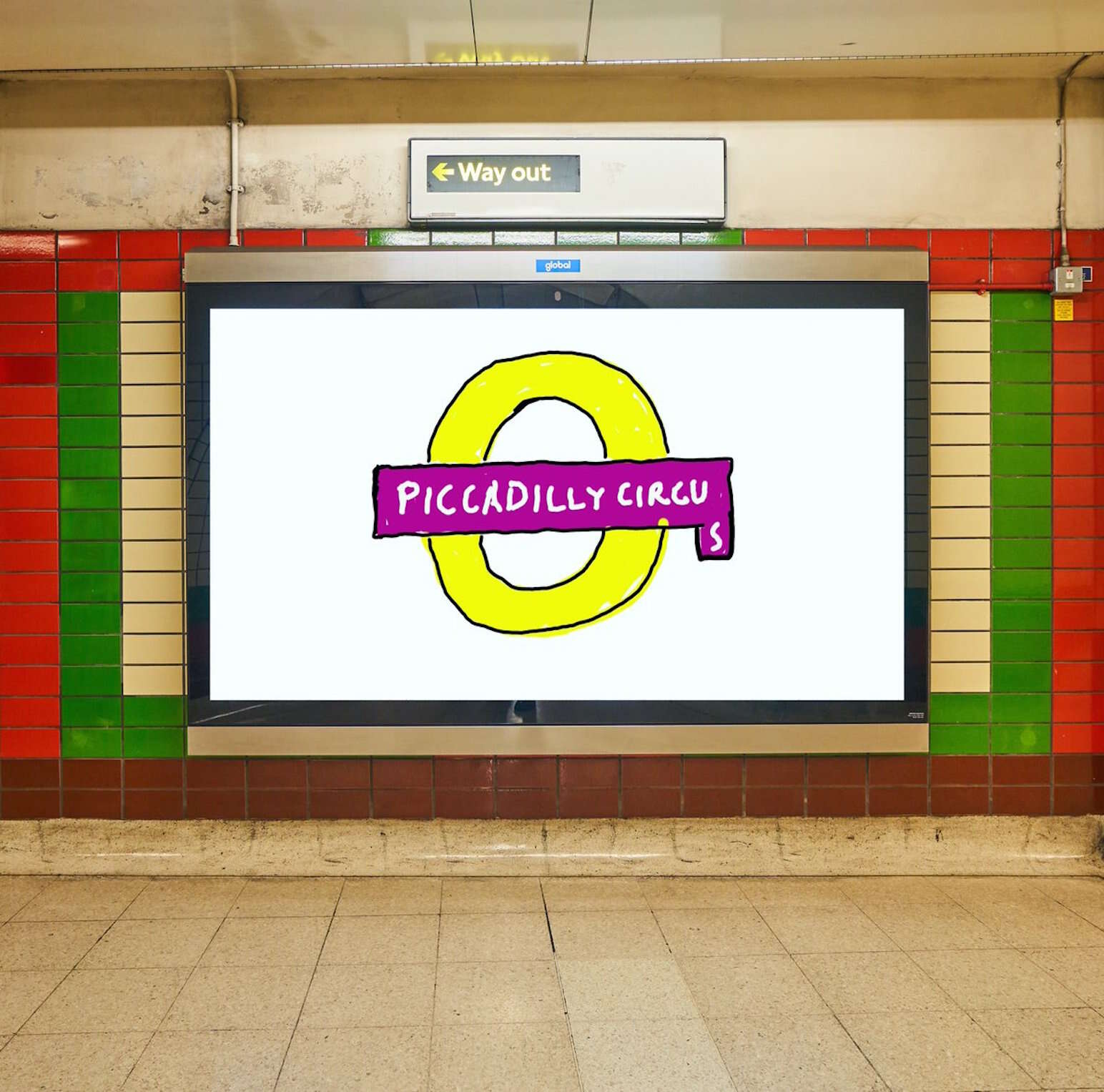

It’s 9am on a Monday in Piccadilly Circus. Sweat drips down the nape of your neck as you emerge from the Tube carriage, a sardine tin of people spilling out on to the platform. You wish you could be anywhere but here. And then you see it.
An odd sign, more a scribble than a painting. In pink and yellow, it looks like a child has been set loose on Microsoft Paint; the “s” in “Piccadilly Circus” dropped off at the end, a forgotten addition to a nonsense spectacle. At first you frown, and then you smile. You realise that in those five seconds you have forgotten about the mass of people, the heat and noise of the station. Momentarily, your wish has been granted.
Just in time for a Royal Academy exhibition of his work, this painting is the whimsical handiwork of national treasure David Hockney, commissioned as part of the Mayor of London’s Let’s Do London campaign. Most famous for A Bigger Splash (1967) and other vivid paintings depicting life as a gay man in LA, Hockney’s work has evolved with technology. An electronic stylus has replaced the paintbrush, and now the 83-year-old artist can be found hunched over a tablet, using the iPad Brushes app to transform the natural surroundings of West Yorkshire and Normandy into a digital tapestry of technicolour.
As part of a long tradition, commissioned artists from Man Ray to Eduardo Paolozzi and Linder Sterling have transformed the Tube stations of London into bright canvases, adorning the dull commute to work. Some are more impressive than others. Peter Sedgley’s Pimlico Tiles (1972) fade into the background, his yellow circles becoming a backdrop to everyday life rather than an escape from it. Equally, Robyn Denny’s Enamel Panels (1988) barely register, his primary ribbons of colour as forgettable as they are simple.
Hockney’s Piccadilly Circus has also drawn criticism for its simplistic approach. Over on the cesspit of arts criticism that is Twitter, anonymous accounts that decry all art made post-1920 as an abomination have ridiculed Hockney’s scrawl as indicative of the death of art. Other critics have rightly argued that the work feels like a red flag to a bull: fuelling culture-war debates about the legitimacy of public art, rather than encouraging the public to get onside.
But to me, there is something impressive about this silly little drawing that feels like a breath of fresh air in the stale fug of the underground. Walking through London’s Square Mile and further afield, public art so often plays to the safe, sterile tastes of private developers keen to bring artistic flair to artificially created “public realms” void of people or life. These installations act as a polite backdrop, barely gaining attention other than in glossy brochures for luxury housing and developed office spaces.
Successful public art belongs to artists brave enough to forcefully drag people out of the everyday. In Olafur Eliasson’s Ice Watch London (2018) chunks of centuries-old ice, harvested from the Nuup Kangerlua fjord in Greenland, were dumped in front of the Tate Modern. Melting into grey slush over the course of ten days, Ice Watch forced itself into the view of the public, bringing with it conversations on climate change and its impact. This bullish approach didn’t suit everyone, but it succeeded in making people look. Even if only for five seconds, people stopped and wondered what it could mean.
At a time when cuts to the arts are at the top of the political agenda, Hockney’s comic-sans approach feels like a nudge and a wink to the naysayers of contemporary art. Though those more comfortable with a monument to Churchill might sneer, Hockney’s Piccadilly Circus is a testament to the optimism and humour public art can bring. After a year of little joy, I’ll take my moments of laughter where I can.
This article originally appeared on NewStatesman.com.






